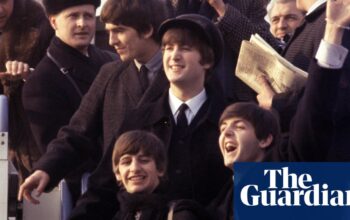That famous Philip Larkin quote people reach for whenever they wish to convey just how detrimental parents can be towards their children reaches some kind of zenith here in Moon Unit Zappa’s extraordinary family memoir. This is a book that frequently takes the breath from the lungs, and leaves the reader with the conviction that Zappa’s complicated clan must surely have been among America’s most dysfunctional.
Even those of us who know precious little about Frank Zappa seem somehow to know the basics: avant-garde 60s/70s rock star, routinely hailed a visionary and a genius; hair, nose, moustache. In Earth to Moon, real-life Zappa is a spectral figure whose attention span stretches only to his own proclivities, while his wife, Gail, is required to deal with everything else. Together, Zappa and Gail would have four children: Moon Unit, Dweezil, Ahmet and Diva. Their oldest was given the middle name of Unit because Zappa believed that her arrival would bond them all for ever. Not so. Zappa was a rock star, after all, and had a reputation to perpetuate. There was art to create, and many women to sleep with. Briefly, there was one who lived within the family home, in the basement.
Moon realised quickly that hers was an atypical upbringing that she could only connect with at one remove, and sardonically. “Growing up, I was just like you,” she writes. “I had a rock star for a dad, two invisible camels for playmates, and daydreamed about my future following in Frank’s footsteps by helping people and making them laugh, only I’d be dressed like a nun.”
As creativity chafed against domesticity, her father, “a pagan absurdist”, was mostly absent. Those times he was at home, Moon did whatever she could to earn his attention. When he laughed at her mimicry of 1980s California teen speak, he got her into the studio to record Valley Girl, a novelty song that surprised him by becoming, in 1982, his only global hit, and by making his daughter, aged 14, a star. This rankled. From here, she became an actor, mixing with Molly Ringwald and Tom Cruise, but rarely felt comfortable in her skin. “Everyone says I look just like Dad. My dad is always saying he’s ugly. I guess that means I am ugly, too.” She bailed out of acting and into ashrams instead, returning home “wearing a Bindi, smiling vacantly and smelling of wet hairy armpit”.
The more errant Frank’s behaviour, the angrier her mother grew. This she took out on Moon, who remained utterly devoted to him regardless. Later in life, when he was ill with cancer, she writes: “I would trade my life for his.”
Gail was discomfited by the adoration. Her daughter annoyed her. The book’s title is a reference to how her mother would mock her for daydreaming, and relations did not improve when Moon grew up. Later, Gail would execute her husband’s will in a way that would drive a wedge between the children that survives to this day.

For such a thoroughly dispiriting saga, Earth to Moon is somehow an unconscionably entertaining read. This is in no small part thanks to the prose. Moon, who published one novel (America the Beautiful) in 2001, is a sublime writer who dips her pen in Nora Ephron’s ink. She is funny, waspish and arch, and maintains the recall of… well, a memoirist, summoning up detailed conversations she had with a psychic at five and surly TV executives at 15.
By adulthood, she’s had thousands of hours of therapy in elusive pursuit of calm (“make peace with what hurts and move towards joy”, she implores at one point), and emerges from this mess as kind, reasonable and remarkably sane. This is tested, though, when Gail tells her that “we need to sell your house. You cost us $200,000 to raise you, and we have to pay for your father’s cancer treatment.” After he dies, Gail’s reaction is “quiet glee”. Years later, when Moon’s daughter undergoes a medical emergency and Moon summons her mother to the hospital for support, Gail is too busy at a birthday party.
after newsletter promotion
If Moon herself comes across as the innocent victim in all this, then the reader remains keenly aware that each of her siblings would likely have very different accounts. But then why shouldn’t she, at 56, tell her story, her way? This is a tale of survival, after all, and having lived within its shadow for so long, she emerges to claim her own narrative at last. And what a narrative it is.
Source: theguardian.com


